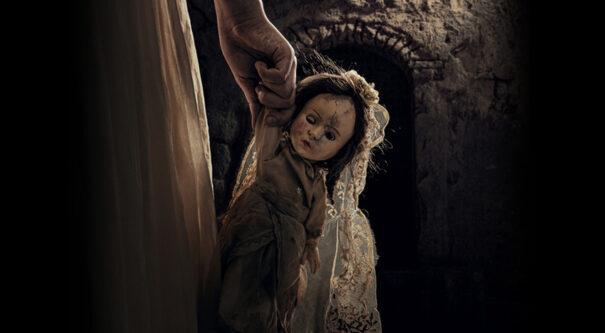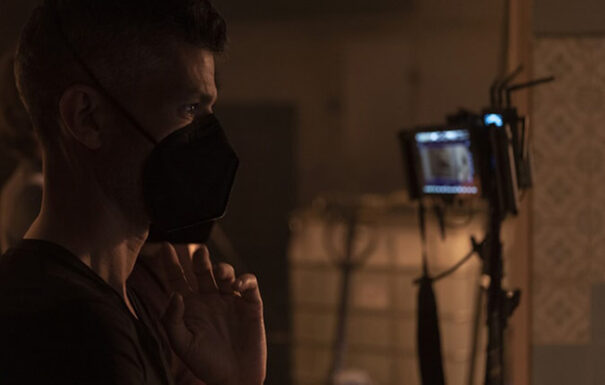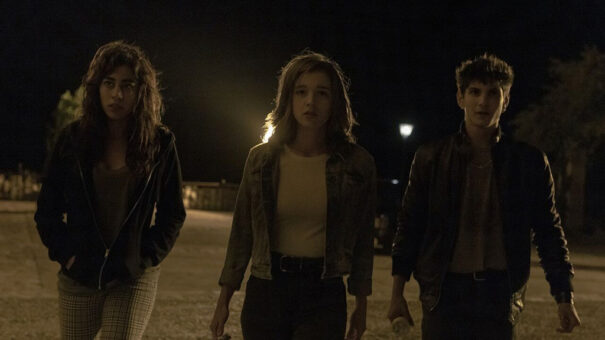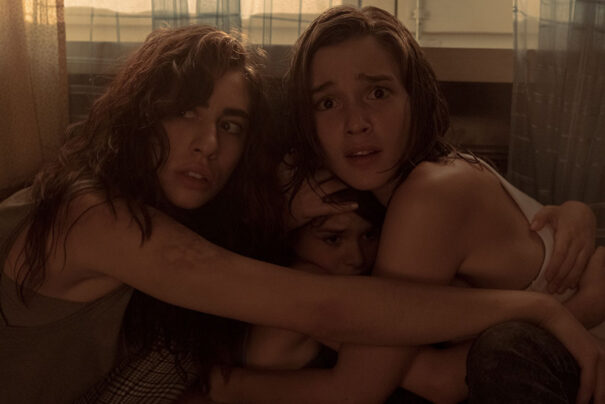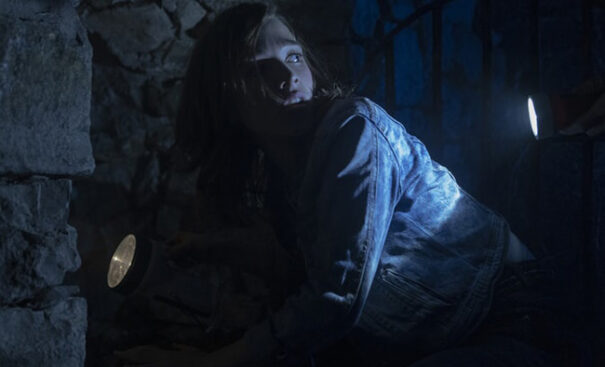‘La niña de la comunión’: un etalonaje al servicio del terror
Jorge Ortiz Yus (Deluxe), colorista de ‘La niña de la comunión‘, relata las claves del tratamiento de color de la nueva incursión de Víctor García en el terror, la cual aterriza en los cines de toda España el 10 de febrero.
Return to House on Haunted Hill (2007), Hellraiser: Revelations (2011) o Gallows Hills (2013) ya dejaban intuir de manera evidente las preferencias de Victor Garcia por el terror más visceral. Tras un breve paso por el thriller con An Affair to Die For (2019), el cineasta regresa con La niña de la comunión, un regreso al lado más terrorífico del cine con un enfoque visual diferente al resto de su filmografía.
Ambientada en un pueblo indeterminado de los años 80, La niña de la comunión cuenta la historia de jóvenes que, tras volver de fiesta, encuentran una muñeca vestida con un traje de comunión. A partir de ahí, sin entrar en spoilers, se sucederán una serie de situaciones que beben abiertamente del terror adolescente ochentero sin renunciar, eso sí, sin renunciar a las señas identitarias de la España de aquella década.
Desde el punto de vista visual, García, con el apoyo del director de fotografía José Luis Bernal, diseñaron una puesta en escena que se aleja a los estándares del género: la sobresaturación agresiva de las películas más habituales del género se sustituye por una puesta en escena natural, elegante, que bebe de referencias como La llorona, La mosca, The Ward o Insidious.
De la fotografía a la postproducción
El equipo técnico de La niña de la comunión trabajó desde fases tempranas de la producción para asegurarse de que el material filmado se correspondiera lo máximo posible al resultado que habían imaginado en sus estudios preliminares; aquel que habían conseguido capturar en las pruebas técnicas.
En esta fase, Bernal trabajó con estrechamente con vestuario y talento para tratar de definir el look final de la película. Con experiencia en numerosas cintas como La Jauría y experiencia en seriales como Hierro y Rapa, el director de fotografía se apoyó en la cámara Sony Venice y un amplio set de ópticas, entre ellas varias opciones vintage, para así otorgar un extra de fidelidad fílmica a la película; la imperfección, como tantas otras veces, se pone al servicio de la experiencia fílmica.
La sensación del fotoquímico
Una vez finalizado el rodaje, Jorge Ortiz Yus, desde Deluxe, se hizo cargo del etalonaje de la película durante dos meses. Tomando todas las referencias de la cinta y con el apoyo de Bernal, definió la línea estética de las diferentes secuencias, se situaran estas en días, noches, interiores o exteriores. A pesar de sus diferencias, pervivieron elementos comunes: “Decimos crear una estética con imágenes con poco color, de modo que muchos de los detalles se intuyeran sin llegar a desaparecer del todo. Aun así ,el rojo se mantuvo como un color predominante en toda la película”.
En paralelo, Ortiz, Bernal y García apostaron notoriamente por la integración de grano en todas las escenas, para así integrar la estética ochentera de la cinta con la fidelidad visual que aporta el digital: “Hemos intentado simular la emulsión del fotoquímico trasladada al archivo digital. Los soportes digitales, al final, nos permiten añadir más o menos definición a la escena, y más o menos grano, lo que aporta una cierta calidez, un toque más cinematográfico”.
Los desafíos de La niña de la comunión
La niña de la comunión fue etalonada utilizando DaVinci Resolve Studio, software multidisciplinar de Blackmagic Design. Ortiz, que lleva trabajando con esta herramienta desde 2010, pudo aprovechar al máximo algunas de las funciones clave del software, las cuales se tornaron imprescindibles para La niña de la comunión.
Entre ellas, destaca el uso de herramientas como Magic Mask, máscaras que se aplican automáticamente a una persona o elemento que son detectadas automática o semiautomáticamente por el software: “Como trabajamos con un look desaturado, corríamos el riesgo de que se perdieran los tonos naturales de piel de los actores. Con Magic Mask, pudimos tratar las caras sin necesidad de traquear máscaras, añadiendo más o menos color en función de la escena”.
La versatilidad de la herramienta se materializa con varias vertientes: ya sea aportando calidez a las expresiones de los protagonistas, u otorgando oscuridad al plano más “sobrenatural” de la cinta, de modo que se consiguiera que el misterio acompañara al antagonista de la cinta.
Otra solución clave para Ortiz fue Color Warp, con la que el colorista pudo seleccionar colores o tonos específicos y modificarlos según pidiera la propia escena: “Si había un color que nos había quedado un poco disonante dentro de la estética, usamos la herramienta para llevarlo al look de la secuencia”.
El pozo de La niña de la comunión
Las escenas de noche marcan en gran medida el desarrollo de La niña de la comunión. Estas traían consigo importantes retos, como el tratamiento de las escenas con humo, las cuales tuvieron que ser abordadas para que este elemento siguiera ayudando a mantener la tensión sin estar en un primer plano visual.
Otra de las partes más críticas de la película fue el tratamiento de la zona del pozo, en el que el medio acuático añadió una dificultad añadida: “Todo tenía que estar muy oscuro, pero tenías que jugar con la oscuridad para que al espectador no le costara mucho adivinar qué estaba viendo. Recurrimos al claroscuro para poder mantener toda la tensión e intriga, pero al mismo tiempo dar esas pistas”.
“Acabamos jugando siempre al límite con la oscuridad”, remarca Ortiz, echando la vista atrás.
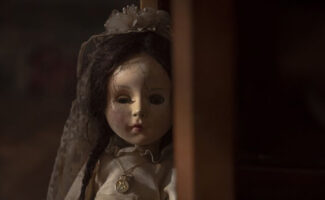 DaVinci Resolve, clave para el proyecto
DaVinci Resolve, clave para el proyecto
En todos los procesos de trabajo y de revisión acometidos para llevar a buen puerto La niña de la comunión, Ortiz agradece haber trabajado con la solución de Blackmagic Design: “Estoy encantado. Hay otros softwares, pero ninguno se acerca a la velocidad con la que hacen los parches y las mejoras”. Ortiz también destaca las actualizaciones constantes a las que se somete la herramienta: “Cada vez los materiales se cargan antes, los traqueos y las estabilizaciones funcionan mejor… Me encanta como herramienta de trabajo”.
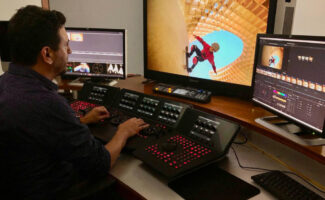 Para este proyecto, Ortiz trabajó con el panel de control DaVinci Resolve Advanced Panel, con el que suele trabajar en grandes proyectos cinematográficos y de publicidad: “He trabajado muchas veces con el Mini, pero siempre intento pedir el Advanced Panel porque tienes acceso a todo. A nivel de cortinillas o rapidez de botones para acceder a cada acción del software mapeada, es una gozada”.
Para este proyecto, Ortiz trabajó con el panel de control DaVinci Resolve Advanced Panel, con el que suele trabajar en grandes proyectos cinematográficos y de publicidad: “He trabajado muchas veces con el Mini, pero siempre intento pedir el Advanced Panel porque tienes acceso a todo. A nivel de cortinillas o rapidez de botones para acceder a cada acción del software mapeada, es una gozada”.
La niña de la comunión pasó por diferentes fases antes de tener su versión definitiva para cines. Al primer tratamiento de color ejecutado por Ortiz con el apoyo de Bernal, le sucedieron pases con el propio Victor Garcia y por parte del equipo de producción, entre los que se encontraba Edmon Roch de la productora Ikiru Films. Ahora, a las puertas de su estreno, el público y la crítica juzgará si los ambiciosos objetivos de color y postproducción han sido alcanzados.
A report by Sergio Julián Gómez
https://youtu.be/icCpPFDf1po
Did you like this article?
Subscribe to our NEWSLETTER and you won't miss anything.



